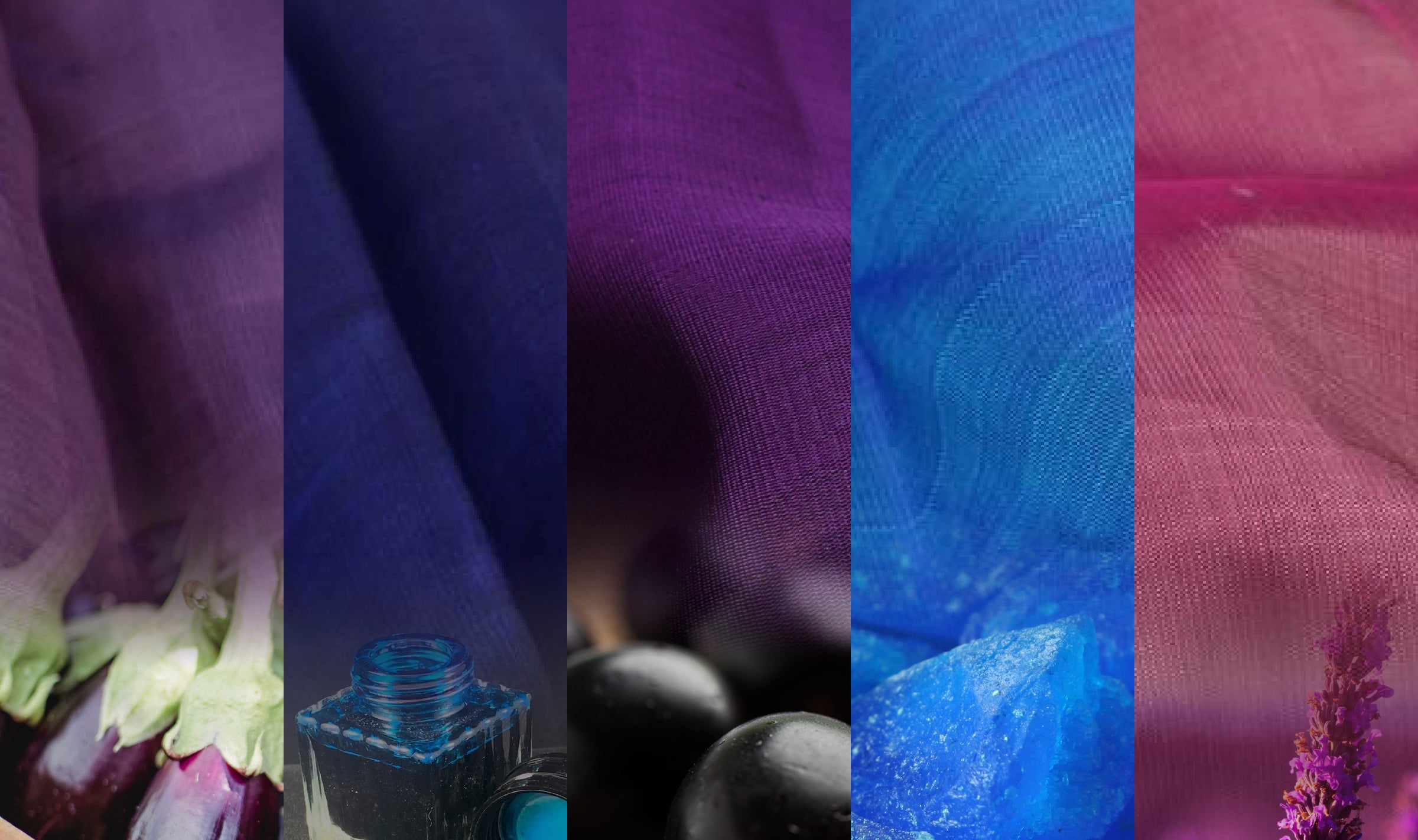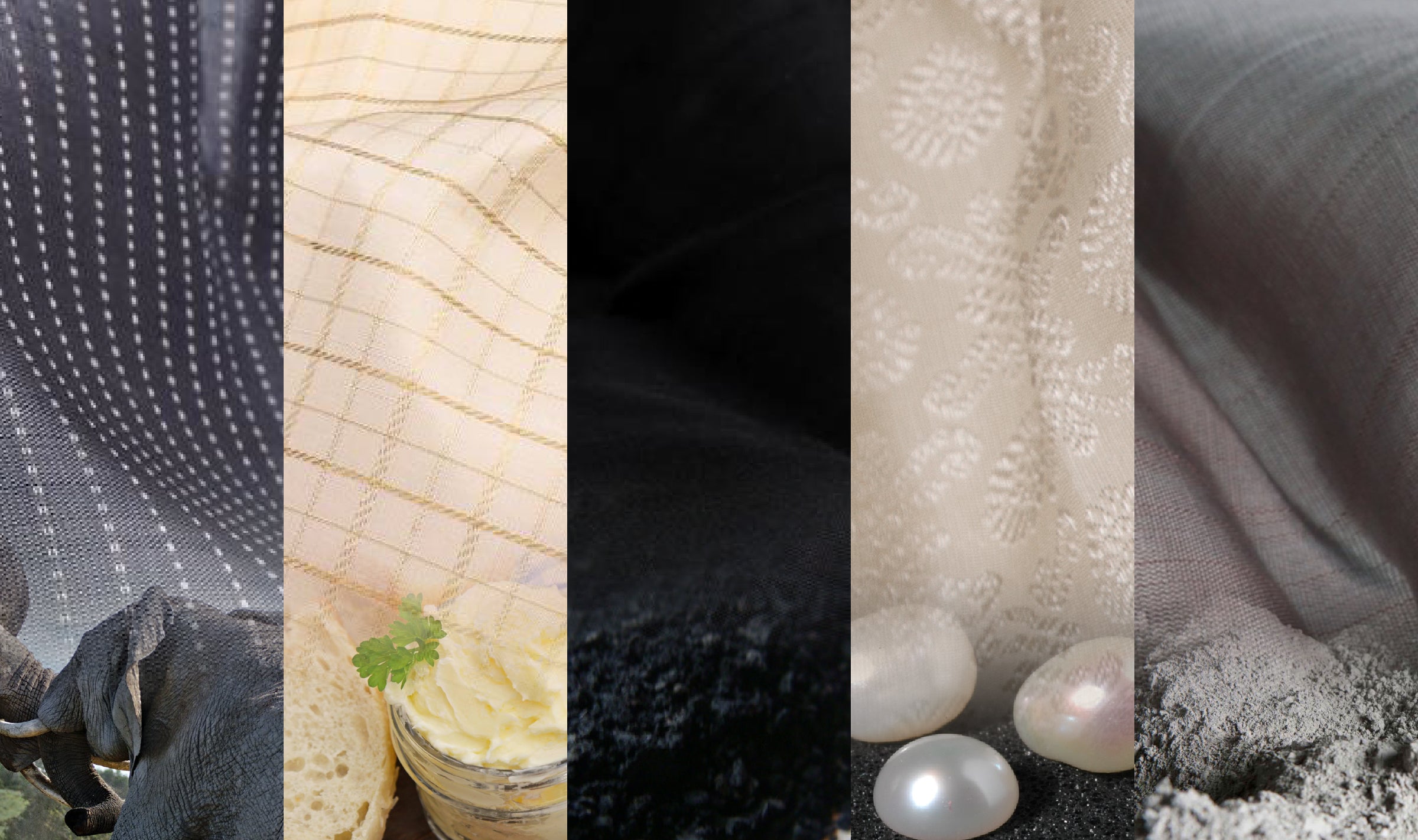Varna Sutra: Haridhra - Kanjivaram's Colours Of The Sun

The kanjivaram is made only more beautiful by the rich symbolism woven into its drape, which is in itself aesthetically lovely. Just as every mudra or hand gesture in the traditional dance form of Bharatanatyam is a visual equivalent of a word or concept, every woven pattern or motif along with the colour of the silk means something to both weaver and wearer.
In this edition of Varna Sutra, we turn to the kanjivaram’s yellows and oranges, attempting to delve into the many meanings of this vibrant and magical palette. The significance of the colour yellow is deeply ingrained in the consciousness and culture of India. No ritual in Hinduism is complete without turmeric or manjal, a substance whose many beneficial properties were recognised early on. Yellow is given several names – pitha (the yellow color), ranjani (that which gives colour), varna datri (that which enhances the body’s complexion), and also haridra (indicating that it’s dear to Hari or Lord Krishna).
Lord Vishnu is often described as the one who wears a shining and lustrous yellow silk, and referred to as pitambaram. The colour of the ‘golden spice’ of India, turmeric, has been held sacred from time immemorial. The ‘earthy herb of the sun’ with the orange-yellow rhizome was considered an oushadhi, a healing herb. Yellow was also produced from bright flowers, and the dyers of India are well known for the brilliant shade of yellow known as basanti, achieved by mixing turmeric with a carbonate of soda or lime juice.
These vibrant, springtime colours of yellow and orange come alive in the following passage from “Ritusamhara”, the 144-stanza poem in which Kalidasa describes the six seasons of the Indian year. The verses below celebrate the colours of the good earth (prithvi), trees and flowers; the wings of insects and birds; and most significantly, a woman’s world, describing her dress, jewellery, flowers, the colours she adorns her eyes, face and lips in, as well as her perfumes. No wonder then, that the harbingers of spring – bright floral colours – made their way into our garments too.
At the hint of spring
Lovely women blend the charm
Of their peerless figures
With colourful linen vestments
Dyed in the juice of the Kusumba bloom
And the region of the bosom is adorned
By fine raiment of ochre brown
Stained with saffron hue
The mango trees are a blaze of colour
The new foliage flecked with coppery sheen..
The clusters of flowers
Red like coral beads
Mingled with the leafage
Down to the ground
Of Asoka trees
The spring has adorned the earth, in a trice
With the groves of palasha trees aflower
Swinging in the breeze
Bowed with the load of blossom
Resembling flaming fire
The earth looks like a newlywed bride
In lovely red attire
Ritusamhara or the Pageant of seasons by Kalidasa (Canto 6 – Spring), 5TH Century AD
Myths and legends are the dreams of nations. They form a precious part of India’s heritage, mirroring the past. More than an association with luxury and wealth, yellow, orange and saffron have a deeper spiritual significance. Indian sanyasis and sadhus traditionally wear a saffron garb, referred to as kashayam. Narayana Guru, a social revolutionary and the uplifter of the Ezhava community of Kerala, chose to wear yellow and made it the colour of the order of sanyasins that he established.
‘Indian yellow’ or haridhra has many social and cultural associations. Turmeric and its colour are both considered sacred and auspicious. It is associated with several rituals and, in South India especially, a piece of turmeric tied to a thread and dyed yellow with turmeric, is used as the nuptial string or the mangalsutra or thali. Even today in a South Indian household, you might find a ‘Haridhra Ganapathi’ or a simple prism made out of turmeric paste to propitiate Lord Ganesha at the start of a pooja.
In the Valmiki Ramayanam there is a description of Sita, the betrothed of Rama, dressed in beautiful yellow silk. South Indian weddings are believed to reflect this ideal marriage of Rama and Sita, and even present day weddings are not complete without guests and relatives singing the famous song, “Sita Kalyana VaibhogamE, Rama Kalyana VaibhogamE””. This Kriti composed by the 18th century poet saint Thyagaraja, commemorates the beauty of love in Rama’s marriage to Sita. It is sung at the close of the ceremony to invoke good fortune and to wish the couple.
Being a centre of worship and weaving – ‘the town of a thousand looms and a thousand temples’ – Kanchipuram’s temples have unique traditions of their own. The nucleus of Vishnu Kanchi in Kanchipuram is the grand temple of Sri Varadaraja Swamy. The place is also referred to as atthi giri or hasta giri due to the association of the image of original deity being made out of the atthi or fig tree. This wooden deity atthi varadhar is preserved in a small mandapam built inside the temple tank. And only once in forty years is the image taken out for a special offering.
South Indian textiles are always seen against the social and historical context from which they have emerged. Interestingly, during the months of August and September, there is a unique festival for Varadaraja Swamy called the Pavitrotsava festival. Pavitrotsava is a purification ceremony, and during this time the Lord is decorated with Pavitramala or purification garlands made of silk and cotton thread. This practice originated way back, found in the records of the ruler Achyuta Raya in 1533 AD when Kanchipuram was a temple town as well as a flourishing textile hub. In no other temple will you find this unique tradition of garlanding deities with yarn, which is such an integral part of the Kanchipuram life and community.
The bridal kanjivaram and its colours are charged with emotion and are rich in association; in fact, every element of the wedding ceremony can be tied to colour and the expression of moods for auspicious occasions. Again, turmeric plays a key role in special blessings bestowed on the couple. Just before the muhurtam, the bride and groom’s new clothes (the sari and the dhoti along with the mangalsutra) are circulated to the guests along with rice coated in turmeric. The elders take a pinch of this rice, referred to as “akshadai”, and shower it on the newlywed couple, as the mangalsutra is tied on the bride during the most auspicious time.
Apart from the custom of smearing the body with turmeric at weddings, garments dyed or marked at the corners with the vivid yellow of turmeric are considered lucky and to possess protective powers. Manjal and kumkumam, both vivid hues steeped in spirituality, are offered along with Thamboolam to all married women who visit a South Indian household.
The striking and bold hues in this palette are also drawn from fruits and flavours typical to a South Indian kitchen, as well as from some of the most beautiful flowers that bloom in flaming hues of yellow and orange.
Let us look at the many ways in which shades of yellow come to life on the kanjivaram sari:

Srichurnam or simham (Orange-yellow) – The colour of the central line of tilakam worn by the Vaishnavas, a sacred perpendicular mark (thirumann) on their forehead. This streak represents the grace of “Sri” or Lakshmi and hence is called Sri Churnam.

Elumichai (lemon yellow) – The delicate citrus colour is elegant and lovely on the silk, and is also considered a compliment when referring to the complexion.

Mambazham (mango) – Mango yellow is a kanjivaram classic. The king of fruits and its tree are also sacred in the context of sthala vruksham of the Ekamreshwara temple. Under this tree, Lord Shiva and Parvathi get married every year, and it is a major festival in Kanchipuram. The mangai motif and mambazha yellow colour are ubiquitous to the craft.

Kesari / Kunkumapoo (saffron) - The golden orange colour of saffron that appears on the Indian flag, is lustrous on our saris. It also refers to a popular south Indian sweet - rava kesari.

Pasu manjal (tender turmeric colour) – Apart from its use in ceremony and ritual, pasu manjal is a key eement of South Indian cooking and the main ingredient for celebrating Pongal, the harvest festival of Tamil Nadu. This is also used as a cosmetic ingredient in Ayurveda.

Sandhanam (sandalwood) – The light colour of ground sandalwood is always elegant on the kanjivaram. This aromatic material found a place in the treasury of royals, along with precious gems. Its importance in our history is illustrated in Arthasastra’s definition: “Light, soft, moist and greasy as ghee, of pleasant smell, adhesive to the skin, tolerant and absorptive of heat.”

Kanakambaram (light orange) – The light orange shades of this much-loved tropical flower is striking but delicate. The flower has no fragrance but a brilliant colour, and is strung into strands for the hair and for decoration.

Fanta orange – One of the most popular beverages in India, distinctive for its colour, as well as its “ringed glass” bottles.

Vendhayam (fenugreek seeds) – The double hued brownish yellow seeds of fenugreek are an important ingredient in South Indian sambar, and this colour has become popular on kanjivaram saris.

Then (honey) – the lustrous, dark amber shot shade of the oldest sweetener on earth is a rare but stunning colour on the silk. The honeycomb motif (then koodu) is also featured in kanjivaram saris.

Gold – Called ‘goldu’ by the weavers, the usage of zari in the design of a sari dictates its value. Like many civilisations in the world, India was also connected to this lustrous yellow metal, since it was associated with the power of sun, and the eternal shine which never tarnished. The lustre of the silk is accented by the use of zari, and a key element of bridal and heirloom drapes.
Ranging from the subtle to the festive, the Haridhra palette is versatile, adapting to varied occasions. Each hue in this collection is a unique symbol, drawing inspiration from history, mythology and daily life. Experience the coming together of joyful yellows and vibrant oranges in this collective.
- Sreemathy Mohan



